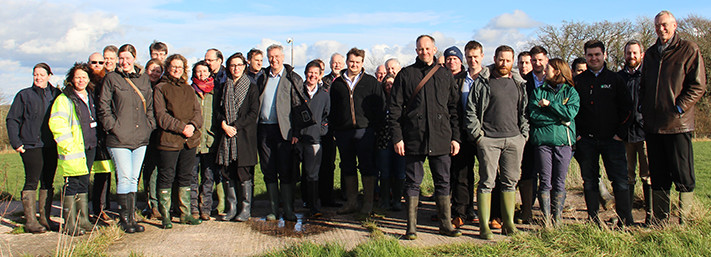Cell wall digestibility discussed at the DLF European Nutrition Symposium 2017
Good forage grass does not just have to be rich in proteins and sugars, it should be easily digestible. Combining those three traits – high protein content, high sugar content, and digestibility – has been a focus of research for DLF for many years.
20/02/2017
Since there is always more to learn we thought that cell digestibility would be a fitting topic for the inaugural DLF European Nutrition Symposium held on 16th February at Rothamsted Research's North Wyke site in Devon, UK.
A lively gathering of European expertise
Our inaugural symposium was held at Rothamsted Research – the world's longest-running agricultural research station – at the kind invitation of Professor Michael Lee. The topic for the day, 'Grass breeding and the role of cell wall digestibility in improved ruminant performance', proved to be highly instructive.
 This was an opportunity for all sectors of the trade to share knowledge and ideas, and to reinforce the importance of cell wall digestibility in plant breeding and grass based forage systems. We were joined by research scientists from across Europe, representatives from agricultural merchant businesses, nutritional advisors, and the trade press.
This was an opportunity for all sectors of the trade to share knowledge and ideas, and to reinforce the importance of cell wall digestibility in plant breeding and grass based forage systems. We were joined by research scientists from across Europe, representatives from agricultural merchant businesses, nutritional advisors, and the trade press.
How science and technology are improving digestibility
The day began with a presentation from Professor Michael Lee, Head of Site and a Ruminant Nutritionist, on plant composition and sustainable grazing. He was followed by the renowned animal nutritionist, Dr John Cone of Wageningen University in Holland, who talked about cell wall degradation and degradability.
Our own Dr Thomas Didion spoke next. In his presentation on breeding for improved cell wall digestibility, Dr Didion explained why and how DLF breed for digestibility, and looked ahead to future developments.
The final paper entitled 'New developments in understanding feed degradability to improve rationing' came from Tom Goatman of Trouw Nutrition GB. He described a new silage-testing system that takes account of the ease with which animals can access the nutrients within a cell.
For an introduction to DNDF, please click on this link.
Open forum encourages discussion and debate
After the formal sessions, an open forum gave everyone an opportunity to discuss what they had heard, add their own views and experiences, or raise technical questions. It was clear that European livestock farmers would benefit from a greater understanding of what was possible with modern grass varieties and their improved digestibility.

This informative and useful day ended with many participants enjoying a guided tour of the North Wyke research facility.
Our thanks go to our generous hosts, Rothamsted Research, and to everyone who came to learn more about grass breeding and forage digestibility.
